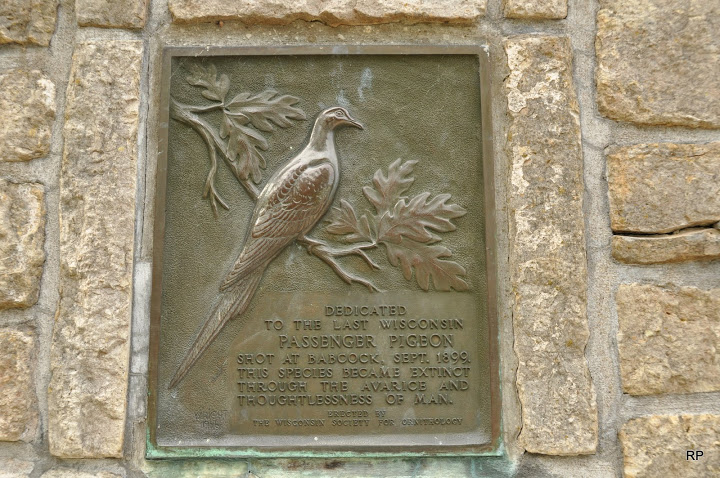The Passenger Pigeon was once one of the most numerous birds in the United States. Migrating flocks turned the skies black. The last one died in a zoo in 1914. Writer BJ Hollers paid a visit to a monument to the birds in Prairie du Chien.
A century after the last one’s death, I strike out in search of a Passenger pigeon. Or at least what’s left of them—a stone monument in Wisconsin’s Wyalusing State Park. I drive south (spot an eagle, some tree sparrows) until reaching the park’s entrance, which has not been plowed, and poses a challenge for my front wheel drive. The car crawls to a halt near Long Valley Road, not far from an ice-encrusted volleyball net. The park is a freshly shaken snow globe—beautiful but desolate, not a person or pigeon anywhere.
My pilgrimage was inspired by Wisconsin conservationist Aldo Leopold, whose 1946 remarks, “On a Monument To The Pigeon,” had—when I first read it—aroused within me such an unrelenting guilt that I found myself re-sorting the recycling bin three times through that week. Maybe it wouldn’t bring back any Passenger pigeons, but I’d sleep a little easier. How else was I to respond to Leopold’s hard truth: that no human would ever again see “the onrushing phalanx of victories birds…chasing the defeated winter from all the woods and prairies of Wisconsin.”
I could have used some of their winter-chasing on the day I arrive at their monument. Or almost arrive there. I don’t dare drive down the accurately named Long Valley Road so I get out and walk, instead. The problem, though, is that I’d been too cheap to pay for the full-day park pass, opting for the hour-long rate, instead. Which means I have to hustle, really hustle, or I might just miss my monument.
If you’ve never seen a grown man sprint through the trees, binoculars bouncing, I highly recommend it. That is, assuming you are not that grown man. Thankfully, save for a rabbit and a couple of deer, my tracks are the only tracks in the snow.
A few steps shy of experiencing a coronary event, I at last reach my monument. I recognize it from pictures—a miniature monolith upon which rests a plaque featuring an engraving of our departed bird. And just below, a line that will soon have me absolving myself once more in the recycling bin: “The species became extinct,” it reads, “through the avarice and thoughtlessness of man.”
I am still breathless, frantic, checking my watch; my time here, I know, is short. But so was the Passenger pigeons’, once we began alighting their sky with our nets and our smoke and our bullets.
From my place on the bluff, I am at last eye-level with the birds. Though there are no birds, not today. What better reminder, I think, of our own mortality than a sky with no wings on the wind?
Ten minutes later, I retrace my tracks through the snow. Still, no one is anywhere—no people, no pigeons, certainly no snow plows. The solemnity afforded by the forest provides little comfort, just further proof of what I’d feared—that our past transgressions were coming home to roost; the echo of the emptiness is deafening.











